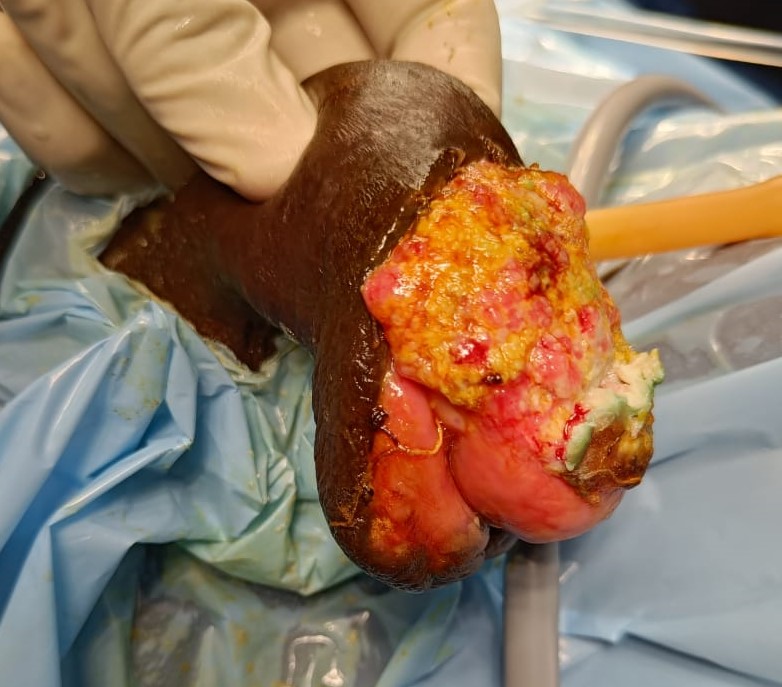Best Doctor for Penis Cancer Treatment in Vashi, Navi Mumbai
Penis Cancer : Types, Symptoms, Diagnosis & Treatment

Cancer Penis
Dr. Varun Agarwal provides a personalized, effective treatment and Robotic Surgery for Penis Cancer in Vashi, Navi Mumbai.
What is Penile Cancer ?
Penile cancer is a condition that arises when malignant cells within the penis exhibit uncontrolled growth. The penis, a male reproductive organ, serves dual functions of urination and sexual intercourse. Its primary components include the rod-shaped shaft extending from the lower abdomen to the tip, known as the glans or head. In uncircumcised individuals, a protective layer of skin called the foreskin covers the head, whereas in circumcised individuals, the head is exposed. Penile cancer can develop anywhere within the penis, but it most commonly initiates on the head or foreskin, particularly in uncircumcised men.
Types of Penile Cancer
- Squamous Cell Carcinoma (SCC):
Approximately 95% of penile cancers manifest as squamous cell carcinoma (SCC), which originates in the upper layer of the skin called the epithelium. - Basal Cell Carcinoma (BCC):
This slow-growing variety of penile cancer originates in the lower layer of the epithelium. - Melanoma:
Melanoma begins in the melanocytes, the cells responsible for controlling skin pigmentation. It represents a more aggressive form of penile cancer. - Sarcoma:
This rare form of penile cancer develops in muscle or connective tissue.
Incidence of Penile Cancer Penile cancer is relatively uncommon in the United States, accounting for less than 1% of all cancers affecting individuals with male genitalia. However, it exhibits a higher prevalence in other regions, such as Africa, Asia, and South America, where it comprises over 10% of cancers among individuals assigned male at birth (AMAB).
Age of Onset Although the majority of penile cancer cases are diagnosed in individuals over the age of 55, it can also affect those under the age of 40, with the average age at diagnosis being around 60.
Symptoms and Causes
Penile cancer typically presents with noticeable changes in the appearance of the penis. Signs and symptoms include:
-
A painless lump or sore that may bleed. -
Swelling and irritation, particularly in the head of the penis (balanitis). -
Skin thickening or alterations in skin color. -
Flat growths with a bluish-brown appearance. -
Foul-smelling fluid beneath the foreskin. -
Small, crusty bumps. -
Rash.
It's essential to note that while these symptoms are indicative of penile cancer, they can also be attributed to less serious conditions, such as infections or allergic reactions. Consequently, it's advisable to consult a healthcare provider for a thorough examination to rule out early-stage cancer.
Diagnosis:
-
Physical examination by a urologist. -
Biopsy to confirm cancerous cells. -
Imaging tests such as MRI or CT scans to determine the extent of the cancer.
Treatment Options:
-
Surgery to remove the tumor (partial or total penectomy). -
Radiation therapy to target cancer cells. -
Chemotherapy for advanced cases or to shrink tumors before surgery
Meet our Uro-Oncologist and Robotic Surgeon






